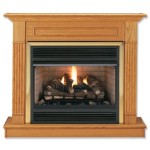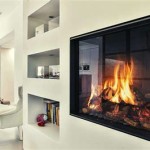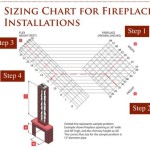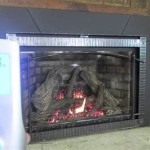Wood Burning Stoves and Fireplace Surrounds: Enhancing Home Heating and Aesthetics
Wood burning stoves have evolved from purely utilitarian heating devices to stylish and efficient home additions. The integration of a wood burning stove with a well-designed fireplace surround elevates both its functional and aesthetic value. This article explores the combination of wood burning stoves and fireplace surrounds, addressing design considerations, material options, installation nuances, safety aspects, and maintenance requirements.
A fireplace surround serves as a visual frame for the wood burning stove, creating a focal point within a room. It can complement the architectural style of the house, from traditional to contemporary, and provides an opportunity to personalize the living space. The surround also functions to protect the surrounding walls from heat damage and soot accumulation, contributing to the overall safety and longevity of the installation. Furthermore, a properly designed surround can improve the efficiency of the stove by reflecting heat back into the room.
Design and Style Considerations for Wood Burning Stove Surrounds
The design of a wood burning stove surround should consider the existing interior décor, the size of the room, and the style of the stove itself. Careful planning is essential to ensure that the surround enhances the stove's presence without overwhelming the space. Several design elements must be factored in, including the size and shape of the surround, the materials used, and the finish.
The size of the surround should be proportional to the size of the stove and the room. A large, ornate surround might be suitable for a spacious living room with high ceilings, while a smaller, more minimalist surround might be better suited for a smaller room. The shape of the surround can also influence the overall aesthetic. Rectangular surrounds are a classic choice that works well with a variety of stove styles, while arched or curved surrounds can add a touch of elegance and sophistication.
Style considerations are paramount. A traditional home might benefit from a surround crafted from materials like brick or stone, with intricate detailing and a classic mantel. A modern home, conversely, might be better complemented by a surround with clean lines, made from materials like steel, concrete, or tile. The color palette of the surround should also harmonize with the existing décor, either blending in seamlessly or providing a contrasting visual element.
The placement of the stove within the surround is equally important. Recessed installations, where the stove is partially or fully set into the surround, can create a seamless and integrated look. Freestanding installations, where the stove sits in front of the surround, offer more flexibility in terms of stove placement and can make it easier to access the stove for maintenance and fuel loading.
Material Options for Fireplace Surrounds
The choice of materials for a wood burning stove surround significantly impacts its appearance, durability, and heat resistance. Several materials are commonly used, each with its own advantages and disadvantages. Selecting the right material depends on the desired aesthetic, budget, and performance requirements.
Brick: Brick is a classic and durable material that offers excellent heat resistance. It provides a traditional and rustic look and can be easily customized with different colors and textures. Brick is also relatively affordable and readily available.
Stone: Stone surrounds offer a natural and elegant look. They are highly durable and heat resistant, and can be fabricated from a variety of stone types, including granite, marble, and limestone. Stone surrounds tend to be more expensive than brick surrounds, but they offer a unique and luxurious aesthetic.
Tile: Tile surrounds provide a versatile and customizable option. Tiles are available in a wide range of colors, patterns, and materials, including ceramic, porcelain, and glass. They are relatively easy to clean and maintain, and can be used to create a variety of different looks, from traditional to contemporary.
Wood: Wood surrounds can add warmth and character to a room. However, wood is less heat resistant than brick, stone, or tile, and must be properly protected from the heat of the stove. This typically involves using a non-combustible backing material and ensuring that the wood surround is properly distanced from the stove. Wood surrounds are often used in conjunction with a mantelpiece.
Concrete: Concrete surrounds offer a modern and industrial look. They are highly durable and heat resistant, and can be cast in a variety of shapes and sizes. Concrete surrounds can be stained or polished to achieve different finishes.
Metal: Metal surrounds, typically made of steel or cast iron, provide a sleek and contemporary look. They are highly durable and heat resistant, and can be powder-coated in a variety of colors. Metal surrounds are often used in modern or industrial-style homes.
Installation, Safety, and Maintenance of Wood Burning Stoves and Surrounds
Proper installation is crucial for the safe and efficient operation of a wood burning stove and its surround. It is highly recommended to hire a qualified professional to install both the stove and the surround, ensuring that all local building codes and safety regulations are followed.
Installation: The installation process typically involves preparing the fireplace opening, installing a chimney liner, positioning the stove, and connecting it to the chimney. The surround is then installed around the stove, ensuring that it is properly secured and that it meets all clearance requirements. Proper ventilation is also essential to prevent the buildup of carbon monoxide, which is a colorless and odorless gas that can be deadly.
Safety: Safety is paramount when operating a wood burning stove. It is essential to install a carbon monoxide detector in the home and to regularly inspect the stove and chimney for any signs of damage or malfunction. The stove should be operated according to the manufacturer's instructions, and only seasoned wood should be burned. Avoid burning treated wood, painted wood, or other materials that can release harmful chemicals into the air. A fire extinguisher should be readily accessible in case of emergency.
Maintenance: Regular maintenance is essential to ensure the longevity and efficiency of the wood burning stove and surround. The chimney should be cleaned at least once a year to remove creosote buildup, which is a flammable substance that can cause chimney fires. The stove should be inspected regularly for any signs of damage, such as cracks or leaks. The surround should be cleaned regularly to remove soot and dust. For surrounds made of porous materials like stone or brick, it might be necessary to apply a sealant to prevent staining.
Furthermore, it is important to adhere to local regulations regarding wood burning appliances. Some areas have restrictions on the type of wood that can be burned, while others have outright bans on wood burning stoves during certain periods due to air quality concerns. Compliance with these regulations ensures both personal safety and environmental responsibility.
The combination of a wood burning stove and a well-designed fireplace surround offers a multitude of benefits, including enhanced heating efficiency, improved aesthetics, and increased home value. By carefully considering design elements, material options, installation procedures, safety precautions, and maintenance requirements, homeowners can create a warm, inviting, and safe living space.
The choice between different wood burning stoves often comes down to heating capacity, style, and price. EPA-certified stoves are generally more efficient and produce fewer emissions than older models. Catalytic stoves, which use a catalytic combustor to burn off gases and smoke, offer even greater efficiency and cleaner burning. Non-catalytic stoves rely on advanced design features to achieve high efficiency without the use of a catalytic combustor. Each type has its advantages, and the best choice depends on individual needs and preferences.
Beyond the technical aspects, the emotional appeal of a wood burning stove is undeniable. The crackling fire, the radiant heat, and the cozy ambiance create a sense of comfort and relaxation that is difficult to replicate with other heating methods. When combined with a thoughtfully designed fireplace surround, a wood burning stove becomes more than just a heating appliance; it becomes a centerpiece that enhances the overall character and charm of the home.
The integration of smart home technology is also becoming increasingly common in wood burning stove installations. Smart thermostats can be used to regulate the stove's output, while sensors can monitor temperature and air quality. These technologies offer greater control and convenience, allowing homeowners to optimize their heating system for maximum efficiency and comfort.
In conclusion, the synergistic relationship between wood burning stoves and fireplace surrounds represents a harmonious blend of functionality and aesthetics. By carefully considering all aspects of design, installation, and maintenance, homeowners can create a beautiful and efficient heating solution that enhances both the value and enjoyment of their home.

Cropton Solid Oak Fireplace Surround Bonfire Berkshire

Choosing A Fireplace Surround For Your Wood Burning Stove

Fireplace Stone Marble Timber Surrounds Bonfire Fireplaces

Limestone Fireplaces For Wood Burning Multi Fuel Stoves Coal Gas Fires

Axon Sworth Limestone Fireplace With Chamber From Direct Stoves

Wood Burning Stoves Coventry Frequently Asked Questions And Fireplaces

Fireplace Surrounds Burning Inspirations

Grisedale Wood Burning Stove Suite Brompton Limestone Mantel Cast Fireplaces

20 Ideas To Decorate Around A Wood Burning Stove

Non Combustible Fireplace Surrounds Bonfire Fireplaces
Related Posts








